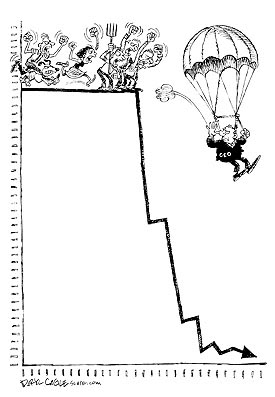Brookings Musings: Driving the Auto Industry to a New Place
(Source: Howard Wial, The Brookings Institution)
In announcing restructuring hurdles for the struggling auto industry, President Obama said that he wants General Motors to create “a credible model for how not only to survive, but to succeed in this competitive global market.” The steps that he announced—such as requiring GM to cut the number of brands and reduce its debt if it is to receive further federal assistance, providing federal backing for car warranties, and providing new incentives for car purchases—will help GM survive… in the short term.
of brands and reduce its debt if it is to receive further federal assistance, providing federal backing for car warranties, and providing new incentives for car purchases—will help GM survive… in the short term.
So will other steps that the president’s auto task force recommended, such as cutting the number of dealerships.
Improving quality requires adopting world-class production and design methods that tap the knowledge of suppliers and production workers. The federal government should condition further aid to GM and its suppliers on the company’s agreement to implement—in cooperation with the United Auto Workers and suppliers—the recommendations of a federal auto industry manufacturing assistance program patterned after the existing Manufacturing Extension Partnership Program.
Spurring innovation requires doing the necessary research to develop the next generation of alternative-powered cars. Part of any additional federal aid to automakers and suppliers should go to support their participation in a consortium that would perform that research.
Click here to read the entire article.





 Not surprisingly, officials from the Canadian and Ontario governments have followed the
Not surprisingly, officials from the Canadian and Ontario governments have followed the 

 OnStar may soon partner with Twitter to offer hands-free tweeting capability to its suite of voice-activated communications services. This may be the perfect compliment to OnStar’s automatic crash reporting.
OnStar may soon partner with Twitter to offer hands-free tweeting capability to its suite of voice-activated communications services. This may be the perfect compliment to OnStar’s automatic crash reporting.
